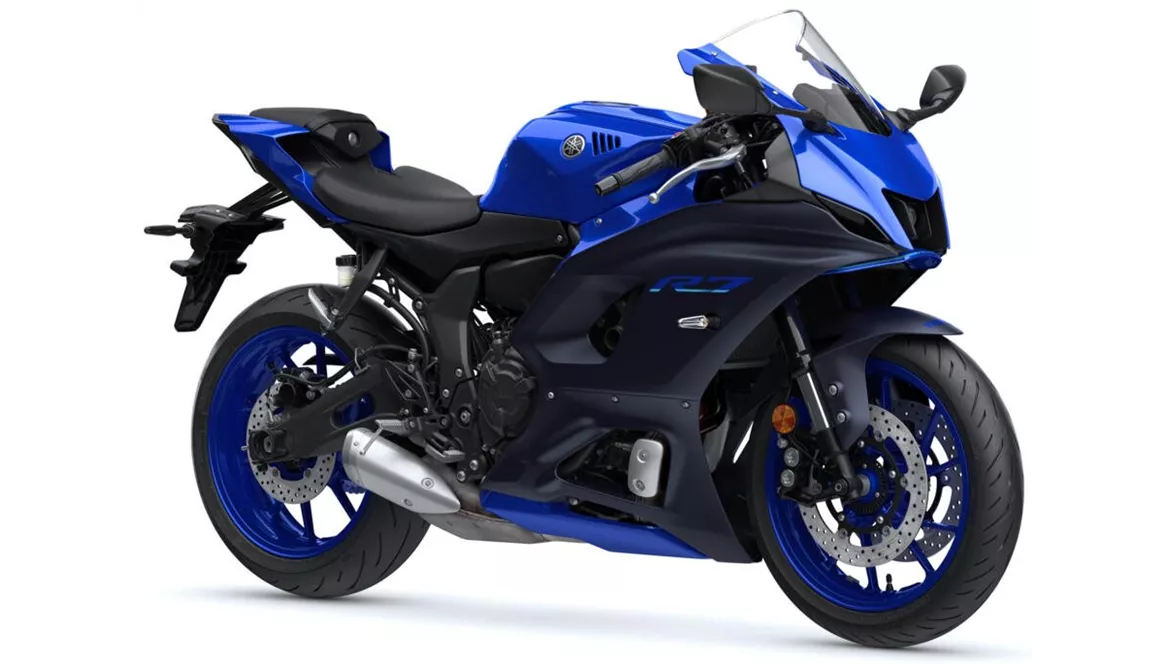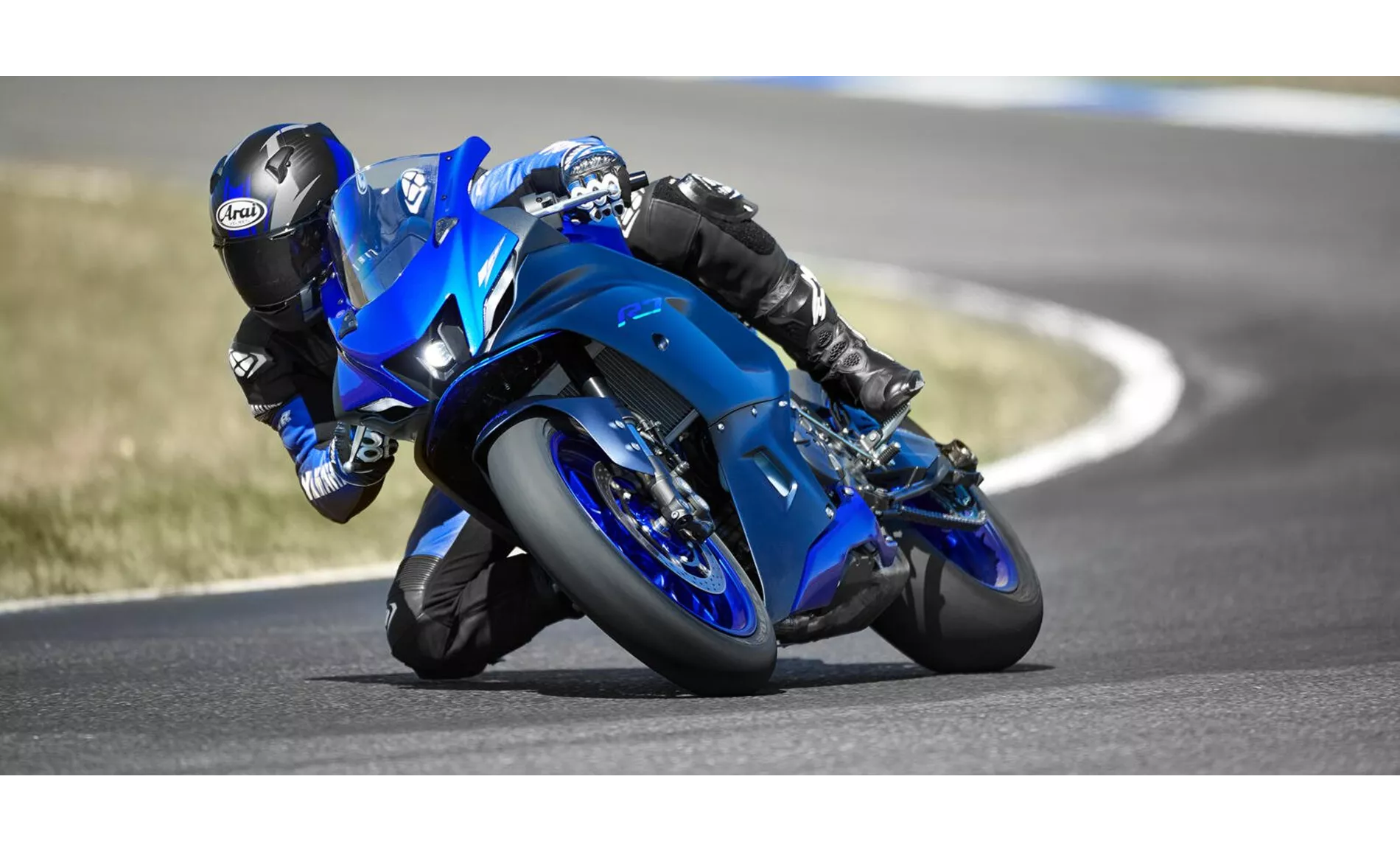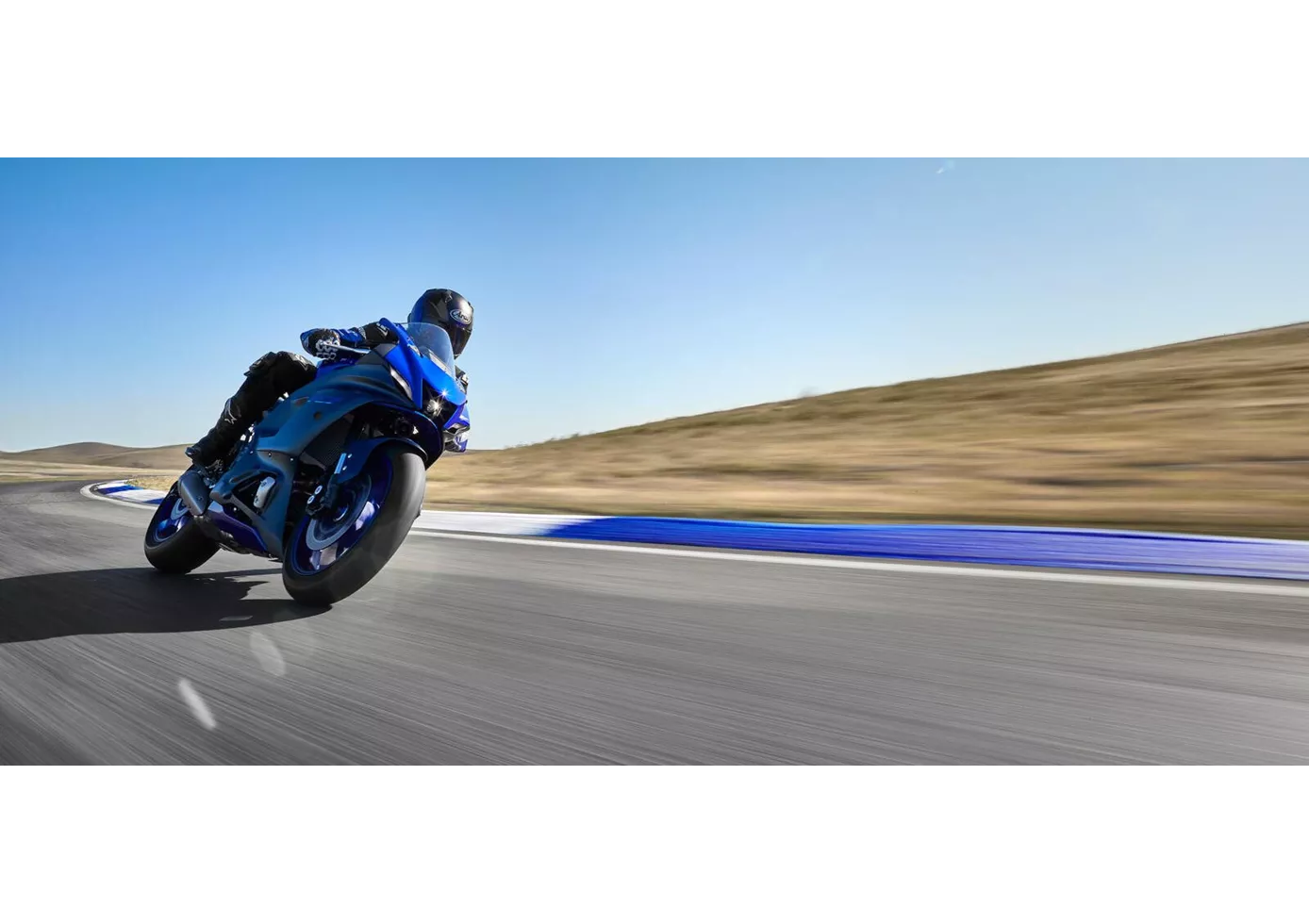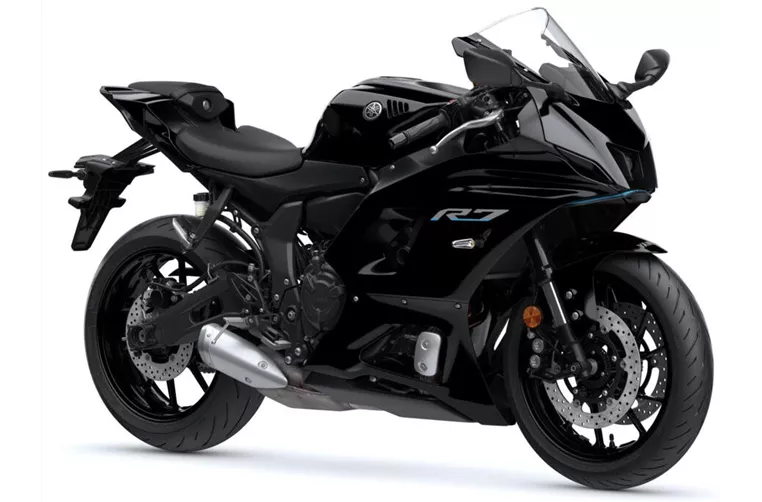Yamaha R1 2019 vs. Yamaha R7 2021

Yamaha R1 2019

Yamaha R7 2021
Overview - Yamaha R1 2019 vs Yamaha R7 2021
The Yamaha R1 model year 2019 and the Yamaha R7 model year 2021 are both supersport motorcycles from Yamaha, but they have several differences in terms of technical specifications and features.
Starting with the engine and drive train, the Yamaha R1 2019 is equipped with a 998cc engine that produces a powerful 200 HP and 112.4 Nm of torque. It has a bore of 79 mm and a stroke of 50.9 mm, with a compression ratio of 13. The R1 has four cylinders and four valves per cylinder, with a DOHC valve system. On the other hand, the Yamaha R7 2021 has a smaller 689cc engine that generates 73.4 HP and 67 Nm of torque. It has a slightly larger bore of 80 mm and stroke of 68.6 mm, with a compression ratio of 11.5. The R7 also has two cylinders and four valves per cylinder, with a DOHC valve system.
In terms of suspension, both models feature upside-down telescopic forks in the front. However, the R1 has an aluminum frame, while the R7 has a steel frame. This difference in frame material may affect the overall weight and handling characteristics of the motorcycles.

Yamaha R1 2019
Both the R1 and R7 have double disk brakes in the front, providing strong stopping power. The R1 is equipped with advanced rider assistance systems such as launch control and traction control, while the R7 only has ABS as a standard rider assistance system.
In terms of dimensions and weights, the R1 has a front tire width of 120 mm and a rear tire width of 190 mm, both with a diameter of 17 inches. It has a wheelbase of 1405 mm and a kerb weight of 199 kg with ABS. The fuel tank capacity is 17 liters. On the other hand, the R7 has a front tire width of 120 mm and a rear tire width of 180 mm, also with a diameter of 17 inches. It has a slightly shorter wheelbase of 1395 mm and a lighter kerb weight of 188 kg with ABS. The fuel tank capacity is 13 liters.

Yamaha R7 2021
In terms of strengths, the Yamaha R1 2019 is known for its powerful engine, clean response, and being a very fast track bike in the right hands. It also has perfectly tuned electronics, which further enhance its performance. On the other hand, the Yamaha R7 2021 is praised for its high-torque CP2 engine, sporty riding position, and well-set suspension. It is considered a good entry-level trackday bike, with standard tires that provide a good balance of grip and performance.
However, both models have their weaknesses. The Yamaha R1 2019 has an ABS system that is not 100 percent satisfactory, which may affect the braking performance in certain situations. The Yamaha R7 2021 does not come with a quickshifter as standard, which could be a desirable feature for some riders.
In conclusion, the Yamaha R1 2019 and Yamaha R7 2021 are both impressive supersport motorcycles with their own unique strengths and weaknesses. The R1 offers a more powerful engine and advanced rider assistance systems, making it a top choice for experienced riders on the track. On the other hand, the R7 provides a more accessible entry-level option with a smaller engine and a focus on sporty handling. Ultimately, the choice between the two will depend on the rider's preferences and intended use.
Technical Specifications Yamaha R1 2019 compared to Yamaha R7 2021
Pros and Cons in comparison
Pros and Cons in comparison
Yamaha R1 2019

The 2020 R1 model - already available from September - is an evolutionary step that will benefit both the trackday racer and the Yamaha SBK team. The amateur is most likely to benefit from the truly perfect electronics and will also appreciate a little extra power.
Yamaha R7 2021

Despite the rather idiosyncratic combination of the sensible 73.4 hp mid-range power unit and the extremely aggressive, sporty look, the R7 is by no means a sheep in wolf's clothing. The performance, which is somewhere between the R3 and the R6, turned out to be much stronger in practice than the pure values on paper would suggest, and in terms of geometry, chassis, brakes and tyres, Yamaha's engineers have really done their homework. On top of that, the Yamaha R7 has all the qualities to have a lot of fun out-of-the-box on a compact race track like the Pannoniaring, for example, even without a big investment. But of course it feels better on the country road, and that's where it belongs in the first place, in our opinion. In view of the overall package, the purchase price is more than fairly priced - so it's not a problem that the quickshifter is not included and has to be purchased as an option.
Price Comparison Avarage Market Price Yamaha R1 vs Yamaha R7
There are a few key differences between a Yamaha R1 2019 and a Yamaha R7 2021. It takes less time to sell a Yamaha R1 with 112 days compared to 161 days for a Yamaha R7. Since model year 2005 1000PS.de editors have written 80 reviews for the Yamaha R1 and 9 reviews for the Yamaha R7 since model year 2021. The first review for the Yamaha R1 was published on 28/04/2003 and now has more than 3,900 views. This compares to more than 92,800 views for the first review on Yamaha R7 published on 18/05/2021.


















